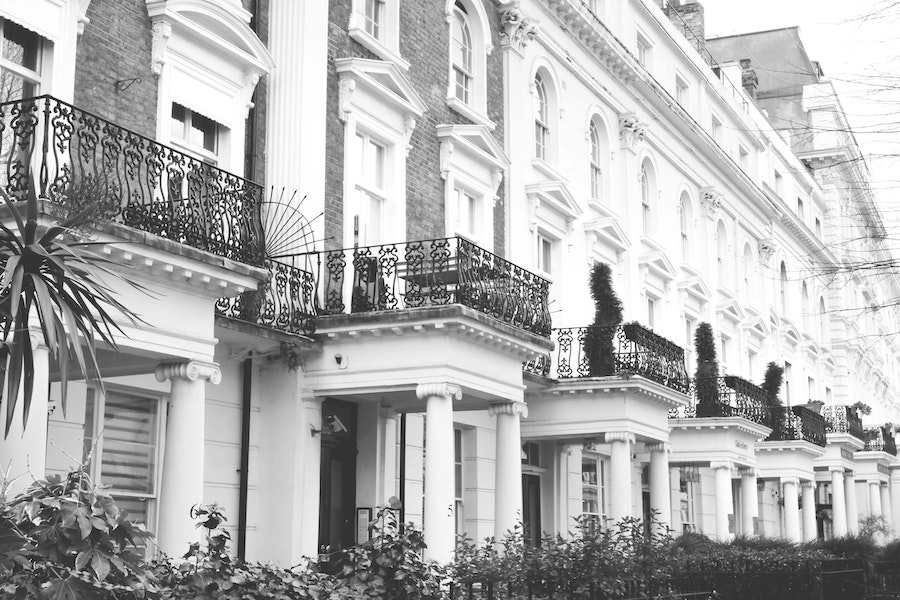A future with less need to commute is making country life more feasible, and rural estate agents’ phones are ringing off the hook.
“At the beginning of the plague, when there was now no more hope but that the whole city would be visited; when all that had friends or estates in the country retired with their families: and when one would have thought the very city itself was running out of the gates, you may be sure that all our trade, except such as related to immediate subsistence, was, as it were, at a full stop.” The words of Daniel Defoe in A Journal of the Plague Year, written in 1722 but based on events in 1665.
Defoe could have been writing about England in 2020. There is one big difference: the great Plague of London in 1665 is estimated to have killed around 200,000 – a quarter of the population. And let’s hope we don’t have to deal with another Great Fire like the one that destroyed most of London the following year. But his description of the rush to the country and the hollowing-out of a great city rings true.
It also sums up the residential property market. In the year of Zoom and the loveliest spring of recent memory, it isn’t surprising that the phones of our country business have been ringing off the hook – but it has been a difficult market in which to buy. Such has been the rush to the country that some estate agents are refusing to entertain viewings for any buyer with a house yet to sell.
Such has been the rush to the country that some estate agents are refusing to entertain viewings for any buyer with a house yet to sell
Prices for everything have been going up – even flawed items that were struggling to sell last year. Many of these are attracting two or three buyers, and prices for good houses are well up – if you can find them. They are thin on the ground and show no sign of getting thicker. Such a sudden uptick in values and turnover is making mortgage valuations problematic and straining the ability of surveyors to do their job. Banks are making life difficult as they try to estimate their customers’ earning power in a post-covid world, and take their time doing so.
One of the by-products of the pandemic has been less traffic on the roads, which can give buyers a false idea of car journey times and road noise. In London we have had to tell clients interested in buying near the river that the sound of lapping water is not often heard over the sound of jet engines passing overhead every 76 seconds and that busy roads like Holland Park Avenue normally have many more cars than bicycles. Distance from London has become much less of an issue – not necessarily because people are going from five days a week in London to none and Zoom, but rather that a three-hour commute once a week is perfectly feasible.
The funeral for the office as a concept is premature. It will probably evolve from forests of desks to many more meeting rooms and temporary workstations but remain the place where ideas are generated and teams built. By the time the virus recedes and people return to a more communal work environment, it may be with some relief. And perhaps some of the rush to the country will subside with the advent of winter and Zoom overload.
In London we have had to tell clients interested in buying near the river that the sound of lapping water is not often heard over the sound of jet engines passing overhead every 76 seconds
Although London is very quiet, we have so far had no clients pulling out. Those living abroad are simply not here, and not likely to be so this year, but domestic buyers do not seem to be put off. In tune with the exodus to the country, we are seeing an urban equivalent in the desire for outside space. Communal gardens are more popular than ever, as are roof terraces, big gardens and access to private squares. The market for these is, like the country, becoming more private and there are no bargains to be had that we can see.
In the areas where buyers are local, there is a brisk market – as in south-west London. Faceless towers that are, well, faceless, are not collecting many bids from individuals, but there are a number of international bulk purchasers that are taking advantage of the stamp duty loophole that brings the level down to 5% when purchasing six or more units. No doubt they are getting a decent discount as well.
We have often commented on the relationship between London and the country. In brief, up until about 2004, you could sell a medium-sized Kensington house and buy a nice rectory in Hampshire. That had been the usual trade for about 25 years. Then the capital stormed ahead and the country languished, culminating in 2014 when the trade had got to one London house for two in the country. Since then London has dribbled downwards while the rectory has more than held its own. Is one expensive or the other cheap? The slipstream of the pandemic, over the next five years, will tell us the answer. Our guess? Probably a bit of both.








